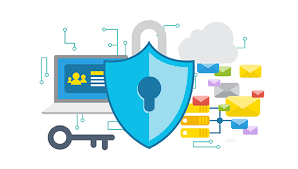What is Cyber Security?
It's about protecting you (your identity, accounts, information, etc) from threats (phishing, malware, social engineering, etc). Cybercriminals often target individuals, as this often proves the easiest method to circumvent security. Cyber Security is vast and complicated, but we've tried to break it down a bit. Knowledge and prepping will get you off to a good start.
Common Threat Types
- Phishing: Communications (most commonly e-mails) for the purpose of obtaining personal information (such as passwords or credit card numbers) or manipulating others to perform unauthorized actions (such as bank transfers or purchases).
- Malware: malicious software such as computer viruses, worms, Trojan horses, ransomware, key loggers and spyware.
- Social Engineering: the use of deception to manipulate individuals into divulging confidential or personal information that may be used for fraudulent purposes. This would include scareware.
Be Prepared
- Follow Safe Computing Practices
- Education and Training (knowing is half the battle, see below)
- Use Password managers/wallets (programs to aid you in keeping track of passwords):
- Use Multi-Factor Authentication (MFA adds security to your logins) where possible:
- Google offers it with their accounts (which includes CCSF student accounts). They call it 2 step (https://www.google.com/landing/2step/).
- CCSF offers this for employee e-mail and other systems
- Step-by-step instructions on how to turn on MFA are available for CCSF employees (you may have to sign in to access this page)
- Use malware protection software (to add security to our computing devices):
- Use a Virtual Private Network (VPN adds security to your internet browsing) when possible:
- Report phishing and spam emails with your email provider:
Education/Training
Go to our Cyber Education and Training page
Got Hacked?
Go to our Got Hacked page to see what you should do.

